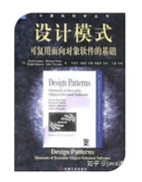设计模式
-
什么是设计模式:一套被反复使用、多数人知晓的、经过分类编目的、代码设计经验的总结。
- 简单理解:特定问题的固定解决方法。
-
好处:使用设计模式是为了可重用代码、让代码更容易被他人理解、保证代码可靠性、重用性。
-
在Gof的《设计模式》书中介绍了23种设计模式

工厂设计模式
- 工厂模式主要负责对象创建的问题。
- 开发中有一个非常重要的原则“开闭原则”,对拓展开放、对修改关闭。
- 可通过反射进行工厂模式的设计,完成动态的对象创建。(通过类对象)
代码:
package com.wlw.chapter12_reflex.demo02_factory;
// 父类
public interface Usb {
void service();
}
package com.wlw.chapter12_reflex.demo02_factory;
//子类
public class Mouse implements Usb {
@Override
public void service() {
System.out.println("鼠标开始工作了");
}
}
package com.wlw.chapter12_reflex.demo02_factory;
//子类
public class Fan implements Usb {
@Override
public void service() {
System.out.println("风扇开始工作了");
}
}
package com.wlw.chapter12_reflex.demo02_factory;
//子类
public class Upan implements Usb {
@Override
public void service() {
System.out.println("U盘开始工作了");
}
}
package com.wlw.chapter12_reflex.demo02_factory;
//子类 键盘
public class KeyBoard implements Usb {
@Override
public void service() {
System.out.println("键盘开始工作了");
}
}
package com.wlw.chapter12_reflex.demo02_factory;
public class Mouse2 implements Usb {
@Override
public void service() {
System.out.println("鼠标2开始执行");
}
}
package com.wlw.chapter12_reflex.demo02_factory;
//工厂类
public class UsbFactory {
/*
Usb是接口(父类),其他为子类(商品),如果增加一个子类(商品),
我就需要更改UsbFactory里的方法,违背了开闭原则,需要优化
反射优化:通过类对象来实例化 ,再增加一个子类(商品)话,就在属性文件中添加这个子类的全名称
利用流和Properties获取后传给creatUsb()方法
*/
public static Usb creatUsb(String type){ //传入的是每个子类的全名称 ,通过类对象来实例化
Usb usb = null;
Class<?> class1 = null;
try {
class1 = Class.forName(type);
usb = (Usb)class1.newInstance();
} catch (Exception e) {
System.out.println(e.getMessage());
}
return usb;
}
/*public static Usb creatUsb(int type){
Usb usb = null;
if(type == 1){ //1 表示鼠标
usb = new Mouse();
}else if(type == 2){ //2 表示风扇
usb = new Fan();
}else if(type == 3){ //3 表示U盘
usb = new Upan();
}else if(type == 4){
usb = new KeyBoard();
}
return usb;
}*/
}
package com.wlw.chapter12_reflex.demo02_factory;
import java.io.FileInputStream;
import java.io.FileNotFoundException;
import java.util.Properties;
import java.util.Scanner;
// 客户程序
public class Demo {
public static void main(String[] args) throws Exception {
System.out.println("===========请选择你想要购买的商品:1鼠标 2风扇 3U盘 4键盘 5鼠标2=======================");
Scanner input = new Scanner(System.in);
String choice = input.next();
//1 = com.wlw.chapter12_reflex.demo02_factory.Mouse
//2 = com.wlw.chapter12_reflex.demo02_factory.Fan
//3 = com.wlw.chapter12_reflex.demo02_factory.Upan
//4 = com.wlw.chapter12_reflex.demo02_factory.KeyBoard
//可以通过 属性文件来 保存这些值
Properties properties = new Properties();
FileInputStream fis =new FileInputStream("usb.properties");
properties.load(fis);
fis.close();
Usb usb = UsbFactory.creatUsb(properties.getProperty(choice));
if(usb != null){
System.out.println("购买成功");
usb.service();
}else {
System.out.println("购买失败,你购买的商品不存在");
}
}
}
单例模式
- 单例(Singleton):只允许创建一个该类的对象。
方式1:饿汉式
-
类加载时创建,天生线程安全
class Singleton{ private static final Singleton instance = new Singleton();//静态常量 private Singleton(){} public static Singleton getInstance(){ return instance; } }
代码:
package com.wlw.chapter12_reflex.demo03_singleton;
/**
* 饿汉式单例
* (1)首先创建一个常量
* (2)构造方法改成私有的。类外那不能创建对象
* (3)通过一个公开的方法。返回这个对象
*/
public class Singleton {
private static final Singleton instance = new Singleton();//静态常量
private Singleton(){}
public static Singleton getInstance(){
return instance;
}
}
package com.wlw.chapter12_reflex.demo03_singleton;
public class TestSingleton {
public static void main(String[] args) {
for (int i = 0; i < 3; i++) {
new Thread(new Runnable() {
@Override
public void run() {
System.out.println(Singleton.getInstance().hashCode());
}
}).start();
}
}
}
/*执行结果: 三次的对象都是一样的
1543370641
1543370641
1543370641
*/
方式2:懒汉式
-
使用时创建,线程不安全,加同步
class Singleton{ private static Singleton instance = null; private Singleton(){} public static synchronized Singleton getInstance(){ if(instance == null){ instance = new Singleton(); } return instance; } }
代码:
package com.wlw.chapter12_reflex.demo03_singleton;
/**
* 懒汉式单例
* (1)首先创建一个对象,赋值为null
* (2)构造方法改成私有的。类外那不能创建对象
* (3)通过一个公开的方法。返回这个对象() (需要同步:同步方法 和 同步代码块)
*/
public class Singleton2 {
private static Singleton2 instance = null;
private Singleton2(){}
/*public static synchronized Singleton2 getInstance(){ //同步方法
if(instance == null){
instance = new Singleton2();
}
return instance;
}*/
public static Singleton2 getInstance(){
if(instance == null){ //这一句是为了提高执行效率,不用每次都判断锁
synchronized (Singleton2.class){ //同步代码块
if(instance == null){
instance = new Singleton2();
}
}
}
return instance;
}
}
package com.wlw.chapter12_reflex.demo03_singleton;
public class TestSingleton2 {
public static void main(String[] args) {
for (int i = 0; i < 3; i++) {
new Thread(new Runnable() {
@Override
public void run() {
System.out.println(Singleton2.getInstance().hashCode());
}
}).start();
}
}
}
/*执行结果: 三次的对象都是一样的
1365888608
1365888608
1365888608
*/
单例模式两种方式的优缺点
- 饿汉式:
- 优点:线程安全
- 缺点:声明周期太长,浪费空间
- 懒汉式:
- 优点:声明周期短,节省空间
- 优点:有线程安全问题(可通过同步方法与同步代码块来改善)
方式3:静态内部类写法(懒汉式)
-
线程安全,使用时创建
class Singleton{ private Singleton(){} private static class Holder{ static Singleton s = new Singleton(); } public static Singleton instance(){ return Holder.s; } }
代码:
package com.wlw.chapter12_reflex.demo03_singleton;
// 静态内部类写法
public class Singleton3 {
private Singleton3(){}
private static class Holder{ // 静态内部类不使用是不会执行的
static Singleton3 instance = new Singleton3();
}
public static Singleton3 getInstance(){
return Holder.instance;
}
}
package com.wlw.chapter12_reflex.demo03_singleton;
public class TestSingleton3 {
public static void main(String[] args) {
for (int i = 0; i < 3; i++) {
new Thread(new Runnable() {
@Override
public void run() {
System.out.println(Singleton3.getInstance().hashCode());
}
}).start();
}
}
}
/*执行结果: 三次的对象都是一样的
1365888608
1365888608
1365888608
*/






















 496
496

 被折叠的 条评论
为什么被折叠?
被折叠的 条评论
为什么被折叠?










